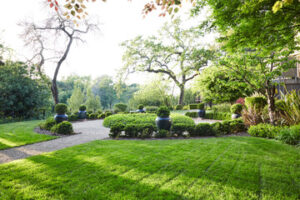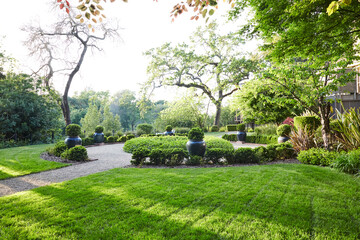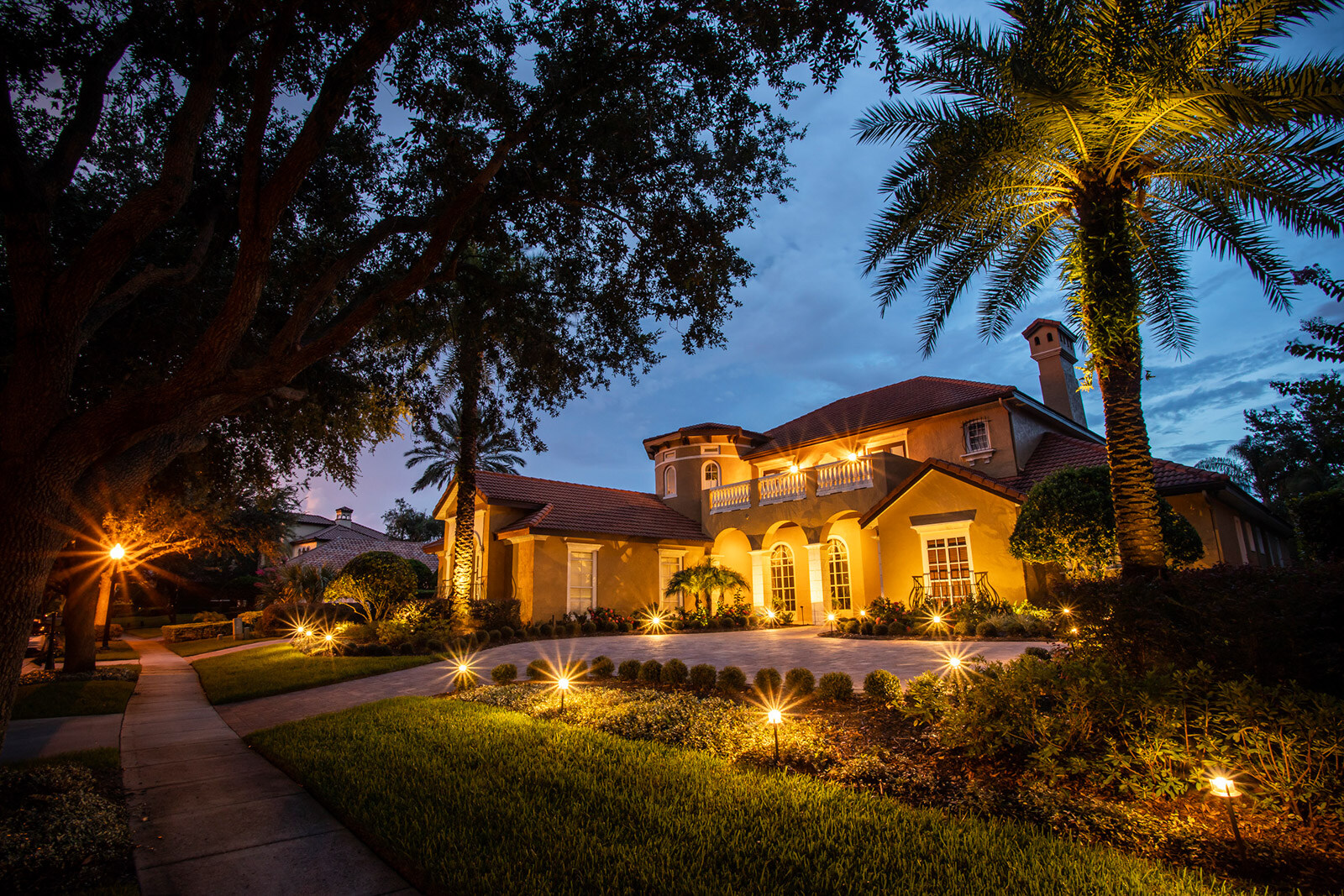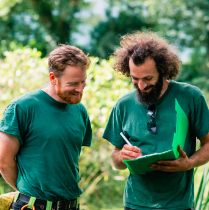Landscaping involves adding plants, changing the terrain, and constructing structures. This is done for aesthetic and functional reasons.
For example, evergreens and berry-producing shrubs can provide year-round visual interest. This increasing request among homeowners is a trend fueling the industry. Visit https://www.primecutlawnky.com/ to learn more.
Landscape fabric can be woven or nonwoven. Woven polypropylene is the most common type of landscape fabric.
A well-maintained landscape will add value to your home. Studies show that homes with great curb appeal are more likely to sell quickly. The front yard is the first thing that people notice, so it’s important to make a good impression. Landscaping can also increase the value of your property by reducing heating and cooling costs. Plants and trees provide shade in the summer, reducing the amount of energy your air conditioner uses. In the winter, plants and trees can block the wind, preventing it from blowing snow into your windows.
A beautiful garden or yard will create a relaxing atmosphere for you and your family to enjoy. Creating a space to relax in your yard can improve your mental health by providing an escape from the stressors of daily life. Studies have shown that spending time in a natural environment can help reduce blood pressure, improve attention and memory, and decrease anxiety and depression.
Landscaped yards can be a great way to set your house apart from the rest of the neighborhood. A well-designed landscaping can add an artistic flair to your outdoor area, which will give potential buyers a sense of what their life would be like living in the home. It’s worth the investment to have a yard that is both beautiful and functional.
When choosing plants for your yard, it’s important to consider their water needs. Some plants require a lot of water to thrive, while others don’t need as much. If you’re unsure which plants will grow best in your climate, consult with a professional.
Landscaping can be a great way to protect your property from erosion, floods and mudslides. If you have a hilly or sloping property, hardscape elements such as patios and retaining walls can help prevent erosion around your home. Landscaping can also reduce the risk of mudslides during heavy rains by planting native trees and shrubs with deep roots that hold soil in place.
Landscaping your property not only adds to its beauty, but it can also save you money on your heating and cooling bills, increase the value of your home, and contribute to your mental and physical health. Contact a professional commercial landscaper to discuss your options and create a design that will complement your property.
Adding Comfort to Your Life
There’s nothing like fresh grass, flowers and trees to make you feel calm and at peace. The sights, sounds and scents of nature can give your body a boost of energy, lower blood pressure, increase concentration, and improve memory. Studies have also shown that just looking at plants and greenery can lower stress levels.
A well-designed and maintained landscape can add value to your home and make it more livable for you, your family, friends, pets, and any guests who might visit. Landscaping is comprised of two parts: softscape and hardscape, with each offering different benefits. Softscape refers to the plants, flowers and grasses in your yard, while hardscape refers to the structures you create like patios and driveways.
Landscaping is an important investment because it can help you get more return on your property, making it easier to sell in the future. Prospective buyers are more likely to be interested in a home with beautiful landscaping than one that has an overgrown lawn and unattractive hardscape features.
When you work with a professional landscaper, you can customize your landscape to reflect your style and personality. Some people want a more natural environment with a flowing stream or waterfall, while others prefer the modern look of clean lines and structural shapes. You can also create a theme in your landscape by incorporating specific colors. Warm colors like red, yellow and orange can evoke excitement while cool colors like blues and greens provide a tranquil feeling.
Cities can become hotter than surrounding rural areas because of concrete, cars and other human activities. Landscaping helps reduce the heat island effect by providing shade and cooling surfaces. For example, a backyard with trees is 31 degrees cooler than a hard surface, such as cement, and 6 degrees cooler than bare soil. Tree shading can also save on cooling bills by reducing the amount of time your air conditioner needs to run.
A professionally designed and maintained landscape can add value to your home, improve your outdoor living space and make it more livable for you, family, friends, pets, and any visitors you may have. The best way to get the most out of your landscaping is to be clear about what you want from a professional and have an idea of how you plan on using your landscape before you begin the design process.
Adding Privacy
When you have privacy around your outdoor spaces, it can make a world of difference in how relaxing and enjoyable your time outside is. After all, nobody wants to sit in their yard or patio watching their neighbors do their chores or walk through their home or business. And this is a great reason to use landscaping techniques that create barriers and hide your property from prying eyes.
There are a number of creative and attractive landscaping ideas that can help you seclude your home or commercial space. These can range from a natural barrier of trees to a water feature that also functions as a privacy screen.
Planting in tiered layers is a common way to add privacy through your landscaping. Start with a tall layer of tall evergreens or shrubs and then move down to a medium level of bushes and shrubs, followed by a lower layer of flowering shrubs and ornamental grasses. This provides a variety of colors and textures, and it gives you the privacy you want without making the effort too obvious.
Using hedges is another simple and effective way to add privacy to your home or business. This is especially good if you have a fence that you want to cover or a building that you want to insulate. You can choose between evergreens like arborvitae and Leyland cypress or deciduous options such as redbud and dogwood. These plants are easy to grow and will provide a green, year-round privacy screen.
If you have a large property or live in a rural area, you can also use trees and large shrubs to block out views. These plants will take longer to mature, however, and may require more maintenance than hedges.
If you are looking for a solution that will be easier to maintain, consider installing a garden fence with a lattice pattern or a more open design. These fences will not only block out your neighbors, but they will also be beautiful additions to your landscape. In addition, a garden fence with latticework can also double as a trellis for a climbing vine such as Boston ivy or a shrub like variegated holly to soften the hardscape edges of your landscape and add additional privacy.
Adding Value to Your Mental Health
In the age of technology, social media, and instant gratification, it’s no secret that stress levels are high. Studies show that the presence of greenery and nature can help reduce symptoms of anxiety and depression. The good news is that you don’t have to spend a lot of time in nature to reap these benefits. Even a small backyard landscape can help.
A beautifully landscaped property not only adds curb appeal and value, but also boosts mental health by reducing stress. A study found that people in neighborhoods with community green spaces have a lower rate of depression and higher self-esteem than those who don’t have access to a nearby park or garden. This is because a well-maintained landscape can provide an escape from the everyday hustle and bustle that can often lead to stress.
Landscaping can also encourage physical activity and promote a healthy lifestyle, particularly for those with sedentary lifestyles. Whether you are pruning hedges, planting flowers, or tending to your vegetable garden, working outdoors helps relieve stress, improve focus, and foster creativity. Additionally, landscaping can be a great way to get your kids and pets active and outside.
The colors and textures of the plants you choose for your landscape can impact how you feel as well. Warm colors, like red and yellow, stimulate the senses and increase energy while cool colors, such as blue, green, and purple offer a soothing effect and promote relaxation. Adding accent colors like whites and grays in your landscaping creates visual contrast that draws the eye, which can help enhance focus and concentration.
So, next time you’re feeling overwhelmed, give your mental health a little lift by heading to your yard or balcony for a spot of gardening or just taking a walk around the neighborhood. The fresh air, brightly colored flowers, and sweet smells of the trees and shrubbery are sure to put a smile on your face! Jayce Lambert is a graduate student from Texas who loves traveling and hiking. She tries to incorporate the beauty of nature into her daily life through her dorm room decor and a balcony herb garden.



